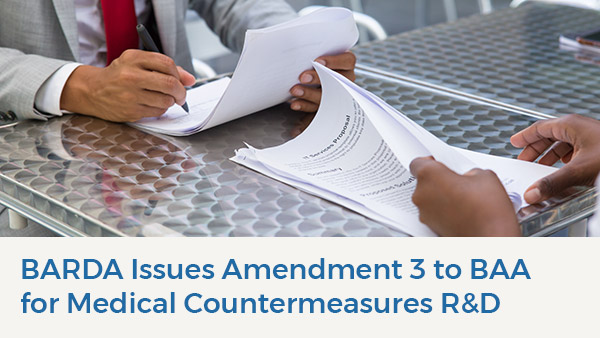The Biomedical Advanced Research and Development Authority (BARDA) has recently unveiled significant updates to its Broad Agency Announcement (BAA), emphasizing a more refined and responsive approach to public health preparedness. Amendment 3, in particular, brings crucial changes to the Areas of Interest (AOIs) that are designed to align BARDA’s efforts with the evolving landscape of global health threats.
Streamlined Processes and Accelerated Innovation
BARDA’s modernized BAA, identified as BARDA BAA-23-100-SOL-00004, continues to focus on improving the efficiency of contract awards and the responsiveness of public health emergency measures. This strategic pivot is aimed at reducing the time between proposal submission and funding decision, thereby enabling a quicker deployment of essential medical countermeasures (MCMs). These efforts underscore BARDA’s commitment to fostering faster and more effective collaborations with the private sector.
Updated Areas of Interest in Amendment 3
Amendment 3 introduces substantive updates across several AOIs, focusing on the most pressing health threats and technological needs:
Enhanced Focus on Antimicrobials and Chemical Countermeasures
Amendment 3 introduces critical updates to AOI #3, which is dedicated to Antimicrobials. The focus has now shifted to include Multi-Drug Resistant (MDR) bacteria and biothreat pathogens, along with MDR fungal infections. This shift underscores the growing concern about antibiotic resistance and the threat it poses to public health.
Similarly, AOI #5, which pertains to Chemical Medical Countermeasures, now includes an updated subsection on opioids and other respiratory depressants. This update is crucial given the ongoing opioid crisis and potential chemical threats that could impact respiratory health. The amendment also specifies updated Technological Readiness Level (TRL) requirements, ensuring that proposals meet a defined level of maturity before funding .
Advances in Burn and Blast Injury Management
One of the most extensive updates in Amendment 3 is within AOI #6, which deals with Burn and Blast Medical Countermeasures. New focus areas include enabling technologies to address general burn and blast injuries, management of head injuries in trauma settings, and advanced hemorrhage control techniques. Furthermore, several new subsections have been added, such as management of blunt trauma injuries and the use of platform agnostic software for AI augmentation of ultrasound imaging data.
This comprehensive update not only expands the scope of research and development but also integrates advanced technologies and methodologies that can be pivotal during mass casualty incidents.
Diagnostic Enhancements for Rapid Response
In the realm of diagnostics (AOI #7), there are notable updates aimed at enhancing the capabilities for rapid and point-of-care testing. For instance, the updated subsection on biothreat agent diagnostics now includes Filovirus diagnostics for point-of-care and remote settings, addressing the urgent need for rapid detection of such deadly pathogens in outbreak scenarios. Additionally, there is a new focus on direct-from-specimen bacterial antimicrobial resistance (AMR) testing, reflecting the critical need for faster diagnostics in combating AMR.
Amendment 3 of BARDA’s BAA signifies a strategic enhancement in the agency’s approach to medical countermeasures across various threats. By updating the AOIs, BARDA is ensuring that its funding priorities align with the most pressing public health needs and the latest scientific advancements. These changes are expected to foster innovation in developing solutions that are not only effective but also timely and responsive to the dynamic landscape of global health threats.
If your company has considered applying for BARDA funding, your federal funding journey starts here.
For additional information about EverGlade Consulting, reach out to: [email protected]








